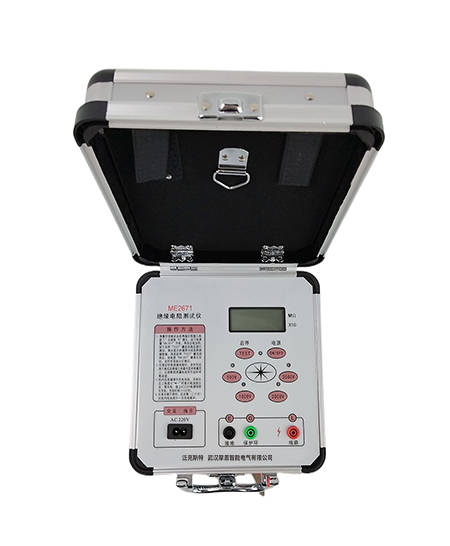The main purpose and common methods of insulation resistance testing
Date:2024-09-27 15:00:00 Views:4670
Insulation resistance testIt is an important part of electrical equipment and electronic component testing, and its main purpose and commonly used methods are as follows:

Main purpose
1. Evaluate insulation performance:
- Test the resistance value of insulation materials to evaluate their insulation performance under working conditions, ensuring that they can effectively isolate current and prevent leakage.
2. Prevent leakage and short circuit:
- Ensure that the insulation layer can effectively prevent leakage and short circuit when the equipment operates at high voltage, thereby ensuring the safety and reliability of the equipment.
3. Detecting aging and damage:
- Through regular testing, identify aging, cracks, or other damages in insulation materials for timely maintenance and replacement.
4. Ensure safety:
- Before putting electrical equipment into use, confirm that its insulation resistance meets safety standards to ensure the safety of operators and equipment.
5. Compliance with standards and specifications:
- Ensure that the insulation performance of the equipment meets relevant industry standards and regulatory requirements to avoid accidents caused by poor insulation.
common method
1. Megohmmeter test:
- Use a megohmmeter (insulation resistance tester) for testing. During testing, connect the two test wires of the megohmmeter to the phase and ground wires of the device under test, and apply a certain test voltage (usually250VThe500Vor1000V)Read the insulation resistance value.
2. DC voltage test:
- Apply a direct current voltage to the tested insulator, measure the leakage current through the insulator, and calculate the insulation resistance. The formula is:
\[
R = \frac{V}{I}
\]
Among them,\(R\)For insulation resistance,\(V\)To apply voltage,\(I\)For leakage current.
3. AC voltage test:
- In some cases, AC voltage can be used for insulation resistance testing, especially when testing certain special equipment. However, AC testing is usually less common and reliable than DC testing.
4. Time testing for insulation resistance testing:
- During the testing process, a time test can be conducted to record the changes in insulation resistance over time. This can help identify the aging trend of insulation materials.
5. Environmental conditions impact:
- Conduct tests under different environmental conditions (such as temperature and humidity) to observe changes in insulation resistance and evaluate the impact of the environment on insulation performance.
matters needing attention
- Test voltage selection: Choose an appropriate test voltage to ensure that the tested equipment is not damaged.
- Testing environment: Conduct testing in a dry and dust-free environment to avoid external factors affecting the test results.
- Safety protection: During insulation resistance testing, ensure the safety of operators and follow relevant safety regulations.
Through these testing methods, the insulation performance of electrical equipment can be effectively evaluated, ensuring its safety and reliability in practical use.




 Weixin Service
Weixin Service

 DouYin
DouYin
 KuaiShou
KuaiShou





















